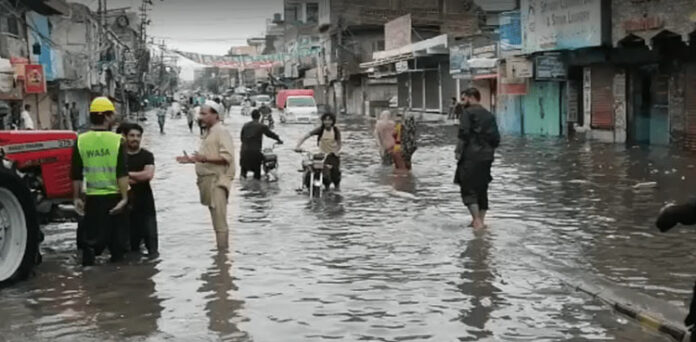Recent heavy rains in Pakistan have caused significant devastation resulting in 98 deaths and 89 injuries, according to the National Disaster Management Authority (NDMA).
The report of NDMA highlights the disproportionate impact of the rains across different regions, with Khyber Pakhtunkhwa bearing the brunt, recording 46 fatalities, followed by Punjab with 26, Balochistan with 15, and Azad Kashmir with 11 reported deaths.
Beyond the human toll, the torrential rains have wreaked havoc on infrastructure and livelihoods. At least 89 people have sustained injuries in various incidents related to the rainfall, with the majority reported in Khyber Pakhtunkhwa, followed by Azad Kashmir, Balochistan, and Punjab.
The impact on housing has been severe, with 536 houses completely destroyed and 2,725 partially damaged across the country. Khyber Pakhtunkhwa has witnessed the highest number of houses damaged, followed by Azad Kashmir and Balochistan, indicating the widespread devastation.

Warnings issued by the meteorological office highlight the ongoing threat, with forecasts predicting rain, wind, and thunderstorms in multiple regions, including upper Khyber Pakhtunkhwa, Gilgit-Baltistan, Kashmir, and the Pothohar region. Moreover, snowfall is expected in mountainous areas of the northern regions, exacerbating the challenges faced by affected communities.
Balochistan, in particular, has been severely impacted by the rainfall, with the port city of Gwadar submerged and numerous villages inundated. Vital infrastructure, such as link roads and bridges along the Pak-Iran coastal belt, has been damaged, further hampering relief efforts and access to affected areas.
The border town of Chaman and surrounding areas have also experienced heavy rainfall, leading to sporadic flash floods that have destroyed mud dwellings and exacerbated the humanitarian crisis.
The aftermath of the heavy rains underscores the urgent need for comprehensive disaster management strategies, including preparedness, response, and recovery measures. Timely intervention and support are essential to mitigate the impact on vulnerable communities and facilitate the restoration of livelihoods and infrastructure in the affected regions.
I am an accomplished graduate of Strategic Studies, driven by a fervent dedication to comprehending global affairs and devising impactful strategies. Equipped with a comprehensive skill set encompassing research, critical thinking, and persuasive communication, I possess a distinctive viewpoint and an unwavering commitment to fostering inclusive decision-making processes. As a versatile individual, I excel in collaborating with diverse groups in various settings, leveraging my strong interpersonal abilities to adapt seamlessly to new environments and surmount any challenges that arise. With a passion for contributing to strategic initiatives, I am eager to leverage my expertise and drive to effect positive change within the field.










